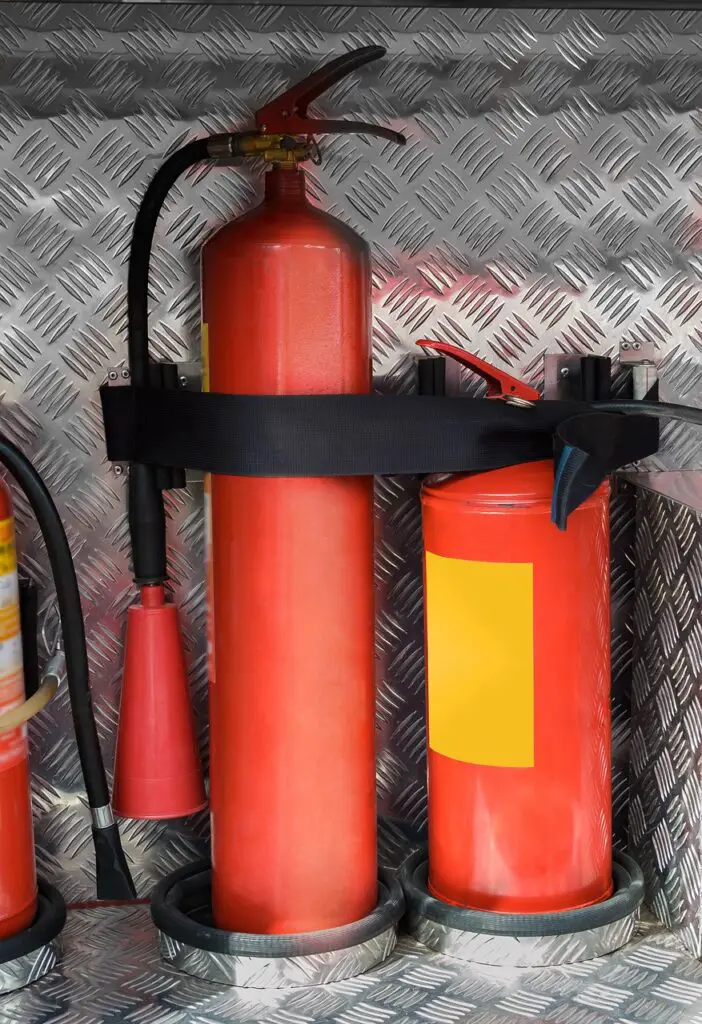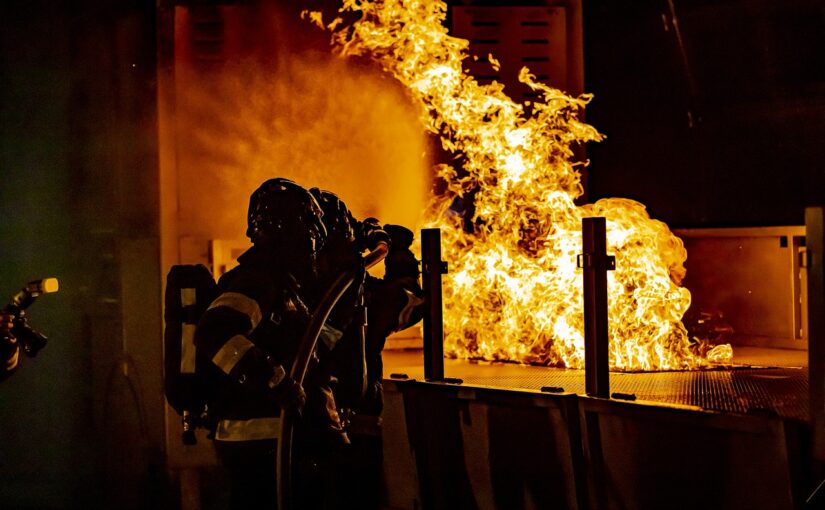When disaster strikes your home in the form of flood or fire damage, it’s natural it feels overwhelmeing. However, immediate action is essential to mitigate any potential damages and begin the restoration process as soon as possible.
So, who do you call when faced with such an ordeal? Professionals in water damage restoration. Their expertise lies in assessing the extent of the damage, and addressing it efficiently while ensuring that preventative measures are put in place to safeguard your home from future incidents.
Remember, time is of the essence and they provide prompt services tailored to your particular situation. So, when catastrophe threatens the well-being of your home, people specialized in water and fire damage restoration should be your go-to call.
Emergency Tips for Fire Damage
If you’re dealing with fire damage, immediate action is vital. Don’t approach the scene till given the all-clear by authorities.
Check for visible structural damage before entering any buildings. Ensure you have protective clothing like boots and gloves to ward off injuries from debris.
- Cut Off Utilities: Have your utilities turned off. Live electrical wires and gas leaks can pose dangerous risks post-fire.
- Document the Damage: Once safe, take photos and record video evidence for insurance purposes. Documenting everything increases the chances of maximum compensation.
- Hire Professionals: Hire certified fire damage restoration companies for proper clean-up, reparation, and deodorizing processes. They understand what needs to be done to return your home to its original state.
- Contact Insurance Company: Notify your insurance company about the fire immediately. File a claim detailing your losses for compensation.
If displaced from your home, reach out to local disaster relief agencies like Red Cross or Salvation Army for immediate shelter options.
Lastly, try seeking counseling to handle emotional distress from experiencing a fire. Remember, it’s okay to seek help during devastating times such as these.
What is the Fire Damage Restoration Process?
Fire damage restoration involves removing residues left by fire, smoke, and corrosive byproducts. The focus is on restoring your home and possessions to their pre-fire conditions.
Damage Inspection
Professionals initiate the process by assessing the scope of fire, smoke, soot, and water damage. The comprehensive evaluation guides the subsequent restoration steps.
Content Cleaning
Damaged furniture, appliances, and personal items will be removed. Restoration technicians determine which items can be salvaged and provide off-site cleaning and restoration services.
Property Stabilization
Professionals also secure your property’s structural core from further damage through roof tarping and board-up services, ensuring stability throughout the restorative procedure.
Water Damage Restoration
The aftermath of extinguishing a fire could result in water damage. Specialists remove this water and dry out the affected areas to prevent mold growth.
Soot and Smoke Removal
Soot and corrosive marks are removed from all surfaces using potent cleaning agents. Intense cleaning coupled with advanced technology ensures effective smoke odor eradication.
Thorough Cleaning
Beyond fire-related damage, an intensive cleanup ensures the removal of dust, debris, or residue throughout your home. All housing elements are cleaned and disinfected at this stage.
Final Restoration
The concluding phase involves extensive repair work aimed at restoring your home’s original state. This cross-platform service ranges from structural reconstruction to carpeting and painting.
Frequent Fire Damage FAQs
After a fire incident, homeowners are often overwhelmed by the calamity. The aftermath brings various questions regarding damage control and restoration.
Immediate Actions
The first course of action should involve calling your insurance provider. They will guide you on the necessary procedures for making a claim.
Securing your property is also essential. This includes boarding up windows and doors if necessary to prevent further damage or pilferage.
Restoration Companies
You should also consider engaging professional restoration companies that specialize in fire damage. These experts have the capacity to reverse most of the harm done.
Carefully vet any prospective company. Ensure they are proficient, knowledgeable, equipped, and experienced in managing and cleaning up after fire incidents.
Content Salvaging
Part of the process involves salvaging valuable items that survived the blaze. A reliable restoration firm can also assist with this intricate task.
Items such as photographs, artwork, and important documents can often be preserved and restored with professional expertise.
Handling Insurance Claims: Making It Easier
It’s crucial to start the claims process following property damage from fires or floods. Remember, relying solely on your insurance company for a settlement isn’t the best move.
Leverage Your Insurance Policy
You’ll need a licensed public adjuster, independent from your insurance firm, to utilize your policy effectively and ensure you receive the full settlement you’re owed.
Focus on Immediate Cleanup
When dealing with water damage, prompt cleanup is essential to prevent mold growth. However, begin the insurance claims process before kick-starting restoration work.
Manage Storm Damage Claims
Winter storms can cause significant damage. You may be unsure about claiming insurance. Seek assistance from public adjusters who can manage the entire claim process for you.
Handle Wildfire Claims Efficiently
After a wildfire, you might face confusion and frustration. Licensed public adjusters are your advocates. They’ll handle the claim and fully utilize your insurance benefits.
If severe storms or unknown structural issues lead to property collapse, you may need professional help to avoid an inadequate settlement.
You may also consider professional help for hailstorms as overlooked damages can result in leakage and structural issues.
Water and Fire Damage: A Double Threat
Your worst fear has come true – your house got ravaged by water or fire. What do you do? Who do you call?
What is the Average Cost of Water Damage Restoration?
Typically, water damage restoration can cost around $3,500. Depending on the extent of damage, costs can range from $450 to $15,000.
Who should be contacted in case of Water Damage?
If there’s evidence of water damage, it’s best to immediately contact a local water damage restoration company for a quick and targeted solution.
What are the Immediate Steps Needed After Detecting Water Damage?
Ensure everyone’s safety first. If possible, stop the source of water and contact your insurance company immediately thereafter. In addition, connect with a restoration professional.
What are the Phases of Water Damage Remediation?
Water damage remediation involves three main phases: mitigation (emergency response), remediation (damage control), and restoration (repair and rebuild).
What Should a Remediation Plan Include?
A comprehensive remediation plan should tackle not only the visible damage but also address underlying issues and include exceptions for inspections and testing.
Should Restoration Companies be Licensed?
Though not mandatory, hiring licensed professionals or companies provides added assurance of quality workmanship and reliable service throughout the restoration process.

The Hidden Danger of Water After Fire
When facing fire damage, it’s crucial to consider accompanying water damage. Firefighting efforts often result in significant water issues and various dangers.
Windows may be shattered, rooftops punctured, and walls pierced to battle and control the fire spread. Consequently, these demolitions trigger water infiltration.
Left unattended, the residual water mixed with soot and dirt could turn into a harmful element. This compound might possess threats that affect your health.
- Sanitation Risk: Leftover soot can mix with standing water, producing unhealthy conditions that potentially breed disease-causing bacteria or fungi.
- Structural Damage: Lingering moisture can weaken structural components such as floorboards or wall sections increasing risks of collapse.
- Mold Growth: Damp conditions are ideal for mold spores to grow, threatening indoor air quality and potentially leading to health issues such as allergies and respiratory problems.
- Damaged Possessions: Water can further ruin fire-damaged items making salvage attempts more difficult and resulting in greater personal property loss.
Hence, after any fire event, it is integral to tackle the water damage immediately. Effective water extraction and cleanup keep potential hazards at bay.
Hiring skilled professionals for fire and flood restoration promises efficient resolution. Their expertise ensures a comprehensive clean-up process recuperating your home swiftly.
Preventing Further Damage: Do’s and Don’ts
When faced with flood or fire damage, swift action can minimize further destruction. Knowing the right steps to take is crucial for an effective response.
Elevating your home physically is a proven method to curb flood damage. However, it might also be a costly measure depending on your home’s structure.
If you need to file an insurance claim following such incidents, using established helplines will expedite the process effectively. Remember, every second counts in these situations.
You’ve now embarked on the recovery path by informing the right authorities. Promptly communicating your predicament allows for timely assistance and efficient resolution.
The process may feel intimidating, but knowing who to call when fire or flood damage occurs indeed alleviates stress and ramps up recovery. You’ve got this!
The Intricate Cleanup Process
After a flood, the cleanup process involves maintaining your indoor air quality while thoroughly disinfecting your home. This requires diligent attention and professional guidance.
Understanding Cleanup Guidance
The EPA’s Flooded Homes Cleanup Guidance can be your go-to guide. It offers easy-to-follow videos, infographics, and comprehensive support through the restoration journey.
In this informative guideline, you will find step-by-step instructions on effectively cleaning your flooded home and avoiding unwanted complications.
Protecting Indoor Air Quality
A crucial part of flood cleanup is protecting your indoor air quality. Ignoring this aspect can have a harmful impact on your health over time.
To ensure healthy air quality after a flood, use resources like the “Homeowner’s and Renter’s Guide to Mold Cleanup”, which offers illustrated tips and safety advice.
Safety Measures Post-Flood
Personal protective equipment is essential during cleanup. Wear an N-95 respirator, goggles, and protective gloves to ensure minimized exposure to hazardous elements.
Equally important is the safe usage of portable generators – these should always be operated outside and away from the home to prevent accidents.
Flood Cleanup Details
You can gain insights on decontamination, cleaning, and drying from Dr. Gene Cole’s flood cleanup webinars. The recordings offer many relevant remediation strategies for different water damage types.
In addition to Dr.Cole’s webinars, documents like “Mold: Worker and Employer Guide to Hazards” emphasize worker protection during mold remediation, an inseparable part of the flood cleanup process.
Restoring Hardwood After Damage
When you see hardwood floors suffering from extreme water damage, often the only viable option is completely replacing them.
However, it’s noteworthy that if the wood floors are on your home’s second floor, you could possibly repair them – even in the case of flood damage.
| Steps | Action | Result |
| Step 1 | Remove waterlogged objects | The room with wood floors is clear of moisture |
| Step 2 | Absorb standing water | The wood floors aren’t soaked |
| Step 3 | Vacuuming with a wet vacuum | Dry wooden floorboards |
| Note | Repeat vacuuming until no more water is observed entering the canister. | |
| Wet vacuum cleaners for this purpose are readily available for rental at local building supply stores |
An effective drying procedure involves not merely draining standing water but also addressing any residual moisture absorbed by the wooden floorboards.
This further stresses the importance of using a wet vacuum cleaner until you observe no more water entering the vacuum canister.
Final Takeaway
Protecting your property from fire and flood damage can be overwhelming. So, always call professionals promptly. Handle insurance claim complexities efficiently. Remember, water presence after fire is an unseen peril. Follow the recommended prevention guide and ensure proper restoration processes for a swift recovery.
